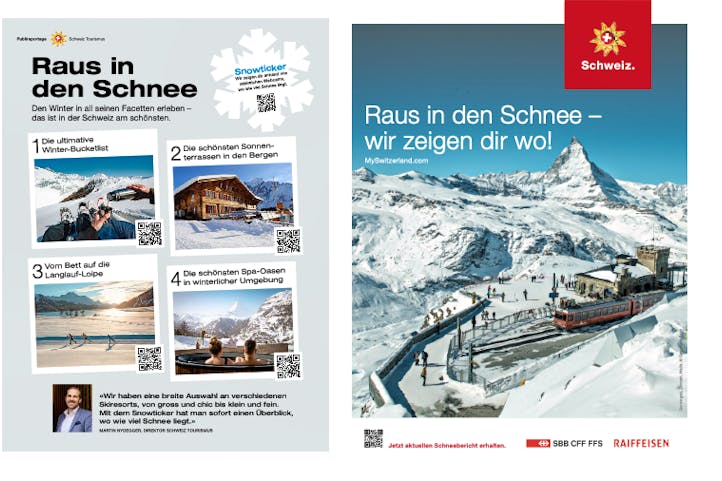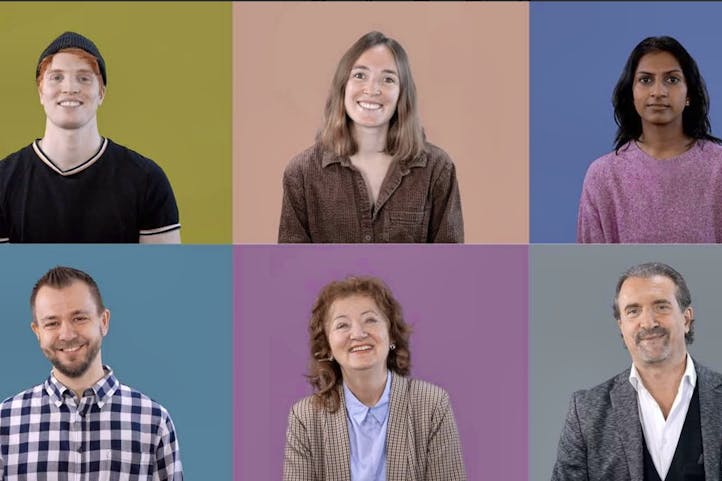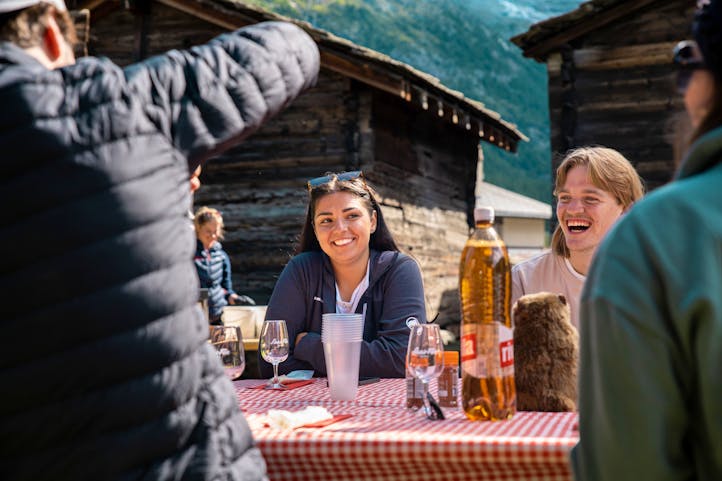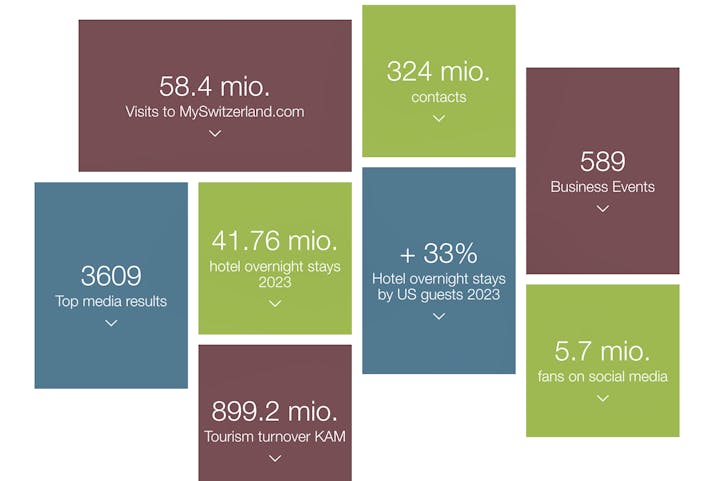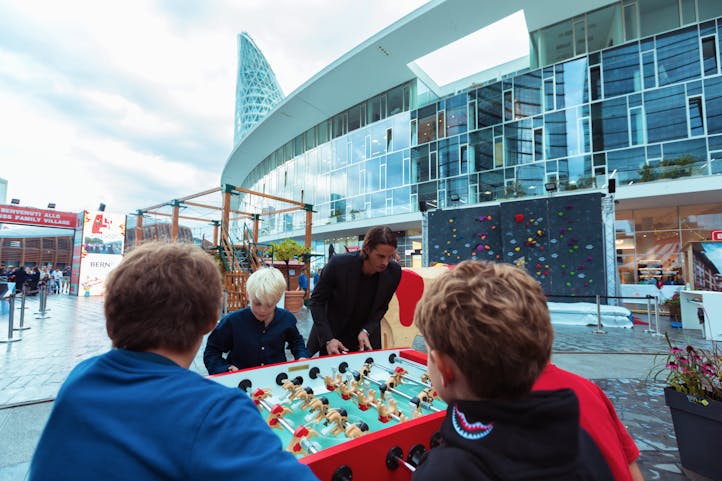Find out more about:
Temporary and localised bottlenecks can and do occur at Switzerland’s tourist hotspots, though they are far from those seen in other countries. As the national tourism marketing organisation, Switzerland Tourism (ST) has therefore been working intensively for some time on solutions to prevent concentrations of guests. One such approach is the promotion of year-round tourism – which is also part of the sustainability strategy Swisstainable. “If we have to set up a turnstile to regulate the flow of visitors, at that point it’s already too late,” explains ST CEO Martin Nydegger.
The trend of season extension
At the Swiss Travel Mart 2023 in Geneva, it became clear that year-round tourism is high on the list of priorities for international tour operators. Peter Strub from German tour operator Studiosus comments: “Season extension is one of the most exciting tourism trends right now. Using the months of May and September to extend the season would offer a great deal of potential.”
Autumn is a particularly good time for this. This is because the atmosphere in the Alpine region is warming almost twice as much as the global average. As a result, summer conditions are likely to last well into the autumn in future. What’s more, in recent decades, the onset of wintry weather conditions has shifted by an average of twelve days from October to November, making the autumn season significantly longer.
Autumn offers a great deal of potential
ST has been developing the autumn in Switzerland into a strategically important, independent tourist season for several years now. According to the tourist accommodation statistics of the Federal Statistical Office, around 6.8 million hotel overnight stays were recorded in September and October 2019. There was already a slight increase seen in 2022, at 7 million hotel overnight stays, although the WHO did not formally declare the pandemic as it was at that time to be over until February 2023.
Domestic guests in particular contributed to the positive result, with an increase of 23.3%. Short-haul markets also recovered well, however, at only just under 5% below pre-pandemic levels.
These are the autumn campaigns of recent years:
- 2018 on the topic “Awaken your senses”
- 2019 with the launch of a wine platform
- 2020 with the launch of the foliage map
- 2021 on the topic of foliage
- 2022 with unusual “Nature Spa” experiences in Switzerland’s autumn
- 2023 on the topic of “Senses”
In light of these findings and this potential, in 2023 ST launched its first autumn campaign, “Senses”, which was not limited to the domestic market, but also ran in the most important European source markets, such as Germany, Italy, France, the UK and Benelux. The campaign invited guests to experience Switzerland with all their senses: sight, hearing, smell, taste and touch. Switzerland’s autumn can be smelled and tasted at one of the countless autumn festivals with their cheeses, chestnuts and pumpkins, for example, or while forest bathing. Sounds characteristic of autumn are revealed during the alpine descents or while on a hike along a rushing mountain stream. Guests could experience autumn with their sense of touch on Kneipp and barefoot paths, while their gazes were drawn to the wild animals and the magnificence of the colourful forests.
The ST strategy with the Senses campaign worked: hotel overnight stays in 2023 rose in autumn by 5.3% year on year to almost 7.4 million, compared to 2022. This in turn is thanks to domestic and European guests: all of the markets included in the campaign (except for Italy) recorded an increase of between 0.9% (Benelux) and 23.5% (UK) in September and October 2023. Blind Scottish comedian Jamie MacDonald and his colleague Julia Sutherland as the protagonists of the autumn commercial seemed to have struck a chord with potential guests with their British humour. The good overall result was certainly also helped by the beautiful and consistent autumn weather, which attracted many people to the mountains, but also motivated them to visit Switzerland’s cities.
Commitment is needed all-round
In order for year-round tourism to be a success, all the organisations involved need to be committed. To guarantee effective guest guidance measures, ST ensures that tourists are travelling to the right places at the right time of year. Guests from India, for example, mainly travel in May and June, guests from Brazil in January and February, and those from South East Asia tend to travel in autumn.
The second campaign that inspired holidays in autumn in Switzerland was “The Perfect Shot”. The YouTube series filmed in September 2023, featuring four content creators from the USA, the UK, India and Canada, transported the audience to places such as Zurich, Herisau, Meiringen, the Engadin, the regions of Locarno, Zermatt, Lausanne, the Montreux Riviera, and the Titlis. ST thus drew the attention of the YouTube community – and therefore future guests – to the low season and lesser-known destinations.
In order for geographical and seasonal diversification to succeed, the tourist regions will need to create an attractive tourist offering. According to the study “The autumn season in Swiss tourism” by EBP Switzerland, demand is rising, but many service providers – particularly in mountain regions – bring the autumn season to a close after the school holidays in October. Concrete figures clearly illustrate the problem: Net bed capacity from September to November is between 50% and 100% lower than in summer in almost all mountain destinations. In November, in half of the destinations, just 25% of the summer offering is still available.
“Year-round tourism offers a huge opportunity. Guests benefit from fewer travellers and often lower prices. Destinations and businesses can utilise their infrastructure for longer. It also becomes possible to employ staff all year round and no longer just as seasonal workers. This results in more experience, more loyalty and, in an ideal scenario, also a better quality service,” Martin Nydegger explains.






